She had no idea what she was getting herself into. Raised in Huntsville, Alabama, daughter of liberal parents who’d been active in the Civil Rights Movement, Jenn Budd graduated from Auburn University in 1995 buried in debt. Before realizing her goal of going to law school, she decided to get some real world experience and pay some bills. She answered a recruitment notice with the US Border Patrol.
“I needed to get out of Alabama,” Jenn recounts. “California sounded exotic and friendlier to gays, and the Border Patrol paid well. I would be working outdoors, hiking, and riding horses.”
She liked the sound of that. She signed the contract on her birthday in June 1995. She had just turned 24.
What Jenn didn’t know was that she was entering the US’s most troubled law enforcement agency — then as now.
At Border Patrol Training Academy, she was immediately taken aback by the language of the agency as well as its culture toward women. Sexist jokes abounded and her instructors, many of Mexican-American heritage, used derogatory terms, like “wetbacks” and “tonks,” to refer to migrants. Unable to work out the difference, she raised her hand to ask, causing her fellow trainees to erupt in laughter.
“There are many racist terms used by agents: beaners, spics, etc. But wetback and tonc [also spelled tonk] are specific to the Border Patrol and specific to the undocumented,” says Jenn. Another former Border Patrol agent, Francisco Cantú, writes in his memoir, The Line Becomes a River, that tonc is “a slur with dubious origins, either an acronym standing for ‘temporarily out of native country’ or a reference to the sound of a flashlight hitting a migrant’s skull.”
Perhaps seeing the look on Jenn’s face, her instructor challenged her. “What? Are you going to have trouble using it?”
“We were all judged on whether or not we adopted agency language. I used the term. And that’s on me. But I should never have been taught it.”
As for the gender-based discrimination, that started the first day of basic training.
When Jenn joined the Border Patrol, the force included 5,000 agents, only 5% of whom were women. On the first day, in separate lecture rooms, the men were told that women didn’t belong, giving them license to bully and abuse their female counterparts. The women were told what was expected of them with regard to jewelry and how they could wear their hair.
Physical training was geared toward building upper body strength, even though the job, at least then, required the lower-body stamina necessary for hiking long distances and running.
“The whole thing was set up to deliberately weed women out,” says Jenn. But even men gave up, finding it too hard. In three months, Jenn lost 30 pounds.
Then came the abuse. Jenn was the only woman in her cohort a lot of the time. She was constantly harassed. Male agents left used condoms in her mailbox. They hid keys from her so she was forced to patrol on foot. They gave her more risky details, sending her to isolated areas to patrol on her own. The message was clear: they wanted her to be their cheerleader, not their colleague; they wanted her to make them coffee, not join them in the field.
Female agents who’d entered the academy just ahead of Jenn warned her never to leave her drink alone. To do so would put her at risk of being drugged and raped. But it turned out drugs weren’t a pre-requisite for sexual assault. She was raped and beaten by a fellow trainee a month before their graduation.
Jenn was not allowed to call the police. “They have no jurisdiction over a Federal agency,” she was told. “We’ll handle this on the inside,” her superiors promised.
But nothing was ever done. Instead, she was forced to fight her attacker in physical training the very next day — black eye, bruised ribs, and all.
The Cult of the Green Line

Border Patrol training in those days lasted four months, in contrast to the six months required to qualify for any US police force. In addition to the physical testing, “You’re supposed to learn Spanish, immigration law, and how to operate firearms and large land-roving vehicles.”
Jenn was looking forward to all of it, but the law instruction turned out to be “altogether lacking. Nothing but multiple choice questions.” And any reference to the legal foundations or imperatives of the agency “was a joke.”
“Constitutional law wasn’t taught at all. There was nothing to help you understand the power of your role, nothing about US history, nothing about the history of the Border Patrol.”
Basic training was little more than induction by propaganda, according the Jenn — more like being inculcated into a cult. “We were told ‘you’re great, you’re heroes, you keep America safe from criminals and drug dealers;’ that no one understands the important job we do, that kind of thing, until we believed it. And we did.”
Asan organization, the agency tasked with patrolling US borders has a huge chip on its proverbial shoulder that was bred, from its earliest days, into its organizational DNA. Called La Migra in Spanish, it was established in 1924, following the passage of the bluntly racist Immigration Act that same year. The original force was made up of poor non-land-owning whites and self-identifying Spanish-Americans, who’d sooner shoot you than tolerate being called a ‘Mexican.’ Men were hired because they owned their own gun; were recruited from the Mounted Guard of Chinese Inspectors, who’d been tasked with enforcing the 19th century Exclusion Acts; or were plucked from the vestiges of the roving patrol once known as the Texas Rangers.
The Rangers helped to shape Anglo-American settlement in the Wild, Wild, West by battling Native Americans, expelling the Chinese who’d built the US railway system, chasing down runaway Black slaves, and settling scores on behalf of their land-owning bosses. They functioned as a paramilitary force at the service of both the Texas Republic (1836–1845) and the State, after it joined the union. They relied on raw, physical violence.
It was precisely this pedigree, and these tactics, that birthed the original US Border Patrol.
From the start, the Patrol played a twin role in post-Civil War US society. With the Emancipation Proclamation and the abolition of slavery, the land barons of the American southwest needed another source of cheap labor to ensure maximum profit yields off their tens of thousands of acres of grains, fruit, vegetables, and cotton. They sent scouts across the border to encourage Mexicans to come sow their fields and harvest their crops. But this came into conflict with the nation’s nativists and eugenicists, who were hell-bent on keeping the country white. They marched into the hallowed halls of Congress to sound the alarm, as expert advisers, regarding the threat of “inferior stock.”
A political compromise was forged: the southwestern farmers and ranchers could have their cheap labor as long as it was kept temporary and marginalized. From its inception, therefore, the Border Patrol acted as the private police for the descendants of America’s white colonizers, on the one hand. And on the other, they patrolled the border to keep out the Chinese and other Asians, while monitoring the seasonal flow of Mexican farm hands and produce pickers.
“They were henchmen for the wealthy, people herders, and vigilantes, too,” says Jenn: an agency established on oppression that, even when formalized by the US government, attracted those who couldn’t get into regular law enforcement.
The Patrol gave second-class citizens a leg up out of poverty, a way to rise above, making its foundations classist too. Having grown up surrounded by sanctioned white violence toward people of color, the Patrol crafted itself into a vigilante-style law enforcement agency. As a result, it suffers from a tradition of being looked down upon — the low-life second cousins nobody really wants to acknowledge at the dinner table.
By the end of their first decade as a force, they added another arrow to their quiver. Prohibition gave rise to organized crime and the need to intercept smugglers at the border. Of course, some Border Patrol agents saw opportunity. Corruption thus began to work its way through the ranks. It thrived, in fact, because the Patrol has always operated in the nether-reaches of society with minimal, if any, oversight, and operating under a vow of silence — then as now.
US Border Patrol Pre-9/11: “A Thing That Crushes”
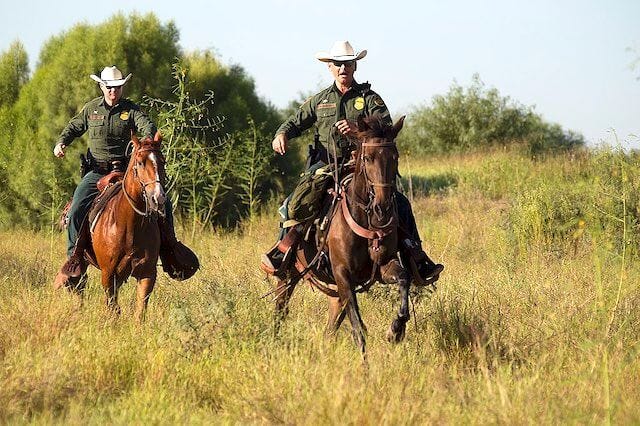
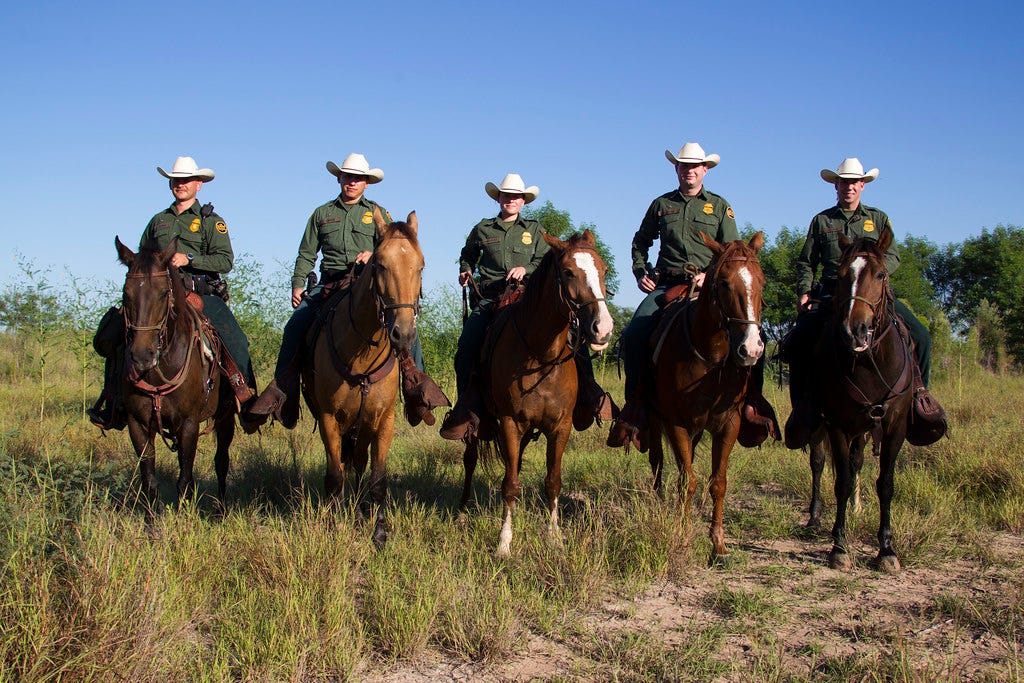
Of course, Jenn knew none this when she joined the agency. Everything she knows today, she learned on the job in Campo, California, from 1995 to 2001.
It only took four months of basic training, however, to figure out the best way to survive the Patrol as a woman: keep to yourself. This wasn’t always by choice. Oftentimes she had to hike her apprehensions back to headquarters because the men in her unit refused to pick her up, which turned out to be not such a bad thing.
“I learned a lot about the people I was arresting, walking them in or waiting for transport; about who they were and what they had run from.”
She remembers her first arrest, or “apprehension” in Border-Patrol speak. She was still a trainee, out with a superior patrolling in a van. They came upon a group and she confronted them, nervous, expecting to find hardened criminals laden with drugs and ammunition. But it was a family with a baby. They were gentle people, visibly poor, and clearly in distress.
“Aren’t they all drug-runners?” She asked her colleague. That’s what she’d been led to believe at the academy.
“No, they’re just crossing in search of work,” he said.
Jenn remembers her mother calling that night to ask about her new job. “I feel like a Nazi,” she answered.
When Jenn was part of Border Patrol, an agent’s only law enforcement trappings were a 6-shooter revolver, a baton, and one pair of handcuffs. There was no wall in Campo then, there wasn’t even a fence, just some barbed wire.
“It was more a community back then.” Mexican kids would come across the border during the day to play soccer on the flatter US land. The only east-west road through town ran north of the border line, making the border fluid. Families of both nationalities lived on both sides and crossed liberally for parties and dinners and school.
“We helped them when they lost their cattle and pigs.”
The border fence was in construction, however. It was coming her direction from the west, starting at Imperial Beach, north of Tijuana. It had reached Tecate, 15 miles from Campo, about the time Jenn earned her Border Patrol badge and uniform. It hit her area sometime in 1996, and kept going.
Turning Point #1
Even before Jenn’s tenure as a Border Patrol agent, the force had taken on another role: From labor police to the apprehension of illegal “aliens” to alcohol and drug interdiction, the 1970s and 80s brought to the borderlands floods of people fleeing the devastation and persecution wrought by the US-funded Dirty Wars. Yet the force resisted change: it never pivoted to see anew the needs and character of this new generation of border crosser.
A humanitarian crisis was unfolding throughout Central America, which would extend into Mexico as the Dirty Wars gave way to the Drug Wars in the 1990s. But Border Patrol agents continued to view migrants, many of whom had legitimate asylum claims, as illegals, criminals, and drug-dealers — then as now.
Then came the 1994 North American Free Trade Agreement (NAFTA), which crashed the Mexican peso, spurring another mass migration northward.
With the numbers of border crossers spiking, Congress doubled down on enforcement, passing two notoriously restrictive immigration policies in 1996, and expanding the agency that, until then, had been little more than a congressional afterthought. The eastward traveling border barrier was just another example of the US government and Border Patrol agency bringing a hammer to bear on a humanitarian crisis — and one of its own making.
The fence created an obstacle course for migrants — a Devil’s Highway, in the words of Luis Alberto Urrea — pushing them into less populated and more inhospitable territory. That, plus an increase in agents, from fewer than 5,000 in 1996 to roughly 9,000 in 1998, made it harder for migrants to cross. The numbers of dead began to grow each year. They were succumbing to the weather: dehydrating to death in summer; freezing to death in winter.
“This didn’t happen before the fence came to Campo,” according the Jenn. The views of human rights groups began to reach her ears: “Your fence is killing people,” they said.
“I started to realize that pushing people east to die was policy. And that the policies I was enforcing were affecting innocent people, not those with criminal records.”
Agents and resources were funneled to the vast desert region of the US borderlands, growing the field office in remote Douglas, Arizona — then the most corrupt town on the 2,000-mile US-Mexico border. It grew big, and it grew fast, with little managerial oversight. Left to their own devices, agents there developed a sprawling kickback scheme; abused migrants in detention, especially women, without recourse; and possibly went into business with for-profit detention operators, earning them the moniker: the Douglas Mafia.
Turning Point #2
In Jenn’s day, the majority of border crossers, “I’d say 99%,” were poor Mexicans looking for work or Central Americans fleeing gang violence. “They were just people looking for a better life,” said Jenn.
“Only the very poor and very desperate will cross the border on foot through the desert. The criminals and drug-runners had the means to enter the US through ports of entry, in cars and airplanes.”
One time, she caught a large group on the Tecate mountains. She was alone, and had only one pair of handcuffs. So she radioed in for transport, which took hours to come. As she and the group sat waiting, perched on the surrounding boulders, they chatted.
“One of the guys spoke English. He was older, greying at temples. He had a law degree. He was better educated than me. He asked me if all migrants coming across the border are treated the same. I realized they weren’t. He asked me, ‘why do you think that is?’ I realized it was about race, about skin color.”
Turning Point #3
Then Jenn clocked who was actually doing the drug smuggling. It wasn’t the migrants.
Jenn had grown disgusted with the frat-house atmosphere of her unit: “I was seeing and hearing lots of unethical and immoral behavior toward women, like agents beating their wives and nothing happening to them; meeting the females they apprehended during the day on other side of the border at night; and abusing women who were detained.”
The victims would file claims, but nothing was ever “found.” Of course, Jenn knew first hand that women had little to no recourse in the nearly all-male Border Patrol army. She decided to leave the “cesspool” at Campo and move into Sector Intelligence: a smaller group of agents more interested in the law. Her aim was to shine a light on the victim abuse within the Patrol and to bring to justice the abusers on victims’ behalf.
“I was arresting people who weren’t dangerous, who weren’t even criminals. But I was surrounded by men who are breaking the law and nothing was happening to them.”
The extent of their impunity, she discovered, was much worse. While working detail with Federal Drug Enforcement Administration (DEA) agents some years earlier, Jenn heard their suspicions that the boss of Campo was trafficking drugs. Once at Sector Intelligence, she opened an investigation. She quickly found that, indeed, he was.
“I tipped my hand to lure him in,” Jenn states. “He admitted it. Then, he threatened me. So I took the revelation to my superiors. They ordered me to stay silent. They warned that if I went to the DEA or the FBI, I would be fired… or worse.”
He then tried to win her silence with a cushy job that would set her up for life and get her out of Campo for good. It would have been so easy to accept the bribe. Her head said, save your reputation. But her heart was more interested in exposing the corruption. He told her “take some time to think about it.”
Driving home that day, Jenn received a call from her supervisor. He said she was needed on a midnight shift that night. He gave her the location, it was near the border fence. She was to remain stationary, rather than patrol. It didn’t make much sense to her, but she was trained to follow orders. So she went. And out in the middle of nowhere, in the middle of the night, while all alone, someone tried to take Jenn’s life.
“The shooting came from south of the border. I couldn’t shoot back because there were houses in that direction. I was able to get away, but it was a close call — I could hear bullets pinging off the rocks all around me.”
She started her truck and radioed for backup, while driving away. No one answered, not at dispatch, not at the station. Several minutes later, she saw the headlights of an approaching vehicle. She glanced at the clock on the truck dashboard. It was 3:00 am. With the lights in her eyes, she couldn’t see who was coming. She slowed to a stop, cocked and aimed her gun, concealing it just under the open window, hidden by the door frame. The oncoming vehicle pulled up next to hers, driver’s door to driver’s door. Only then could she see that she had her gun trained on her boss.
“Have you learned your lesson?” he asked.
Jenn peeled away, swerving to avoid hitting him, and drove straight back to HQ. From the open office door, she tossed the keys to the supervisor on duty and told him she was going home sick. When she got home, she told her then-girlfriend, now wife, “If I don’t get out of there I’m going to die. I don’t believe in what I’m doing. I haven’t for a long time.”
She turned in her badge and her gun in June of 2001, almost six years to the day of her singing her initial contract.
Then came 9/11.
The Militarization of the US Border
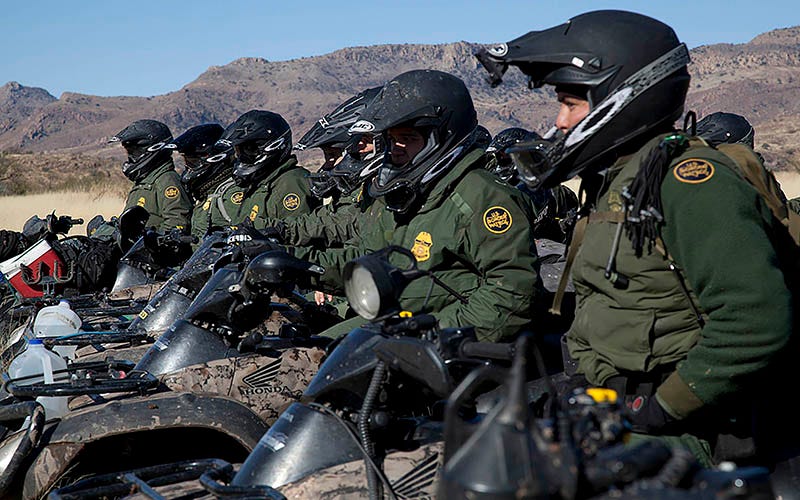
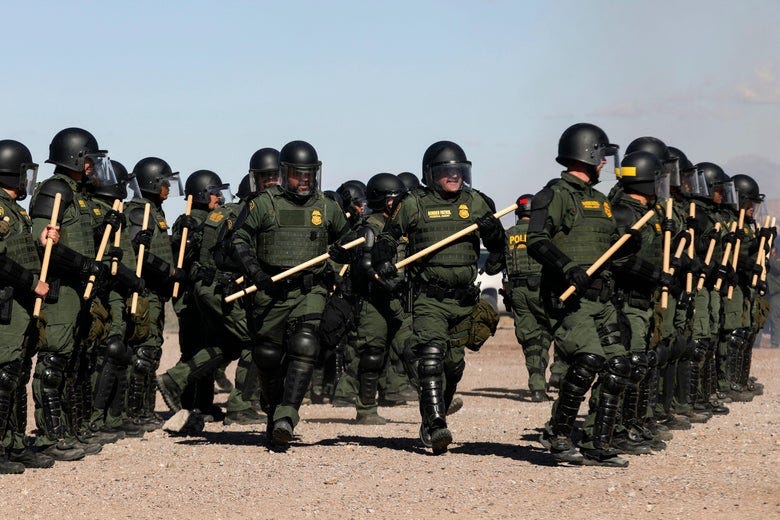
Itwas beautiful, fresh, blue-sky day. The fall season and the sense of new beginnings were in the air. As I walked my then 5-year-old to her third day of kindergarten in downtown Brooklyn, she stretched an arm upward, pointing. “Look, Mama,” she said. “What’s that funny cloud?”
“Oh no!” I exclaimed, on seeing the steel-gray streak cleave the firmament like the mark of an angry Sharpie. “There must be a terrible fire in lower Manhattan.” I did not know that just moments before, at 8:46 am, terrorists linked to al-Qaeda turned American Airlines Flight 11 into a missile and drove it into the North tower of the World Trade Center.
As I exited the school building at roughly 9:03, United Airlines Flight 175 rammed the South tower. That’s when I realized the “terrible fire” was not the result of a tragic accident.
Within 1 hour and 42 minutes, both 110-story towers collapsed, killing 2,977 people, including 343 firefighters, 72 NYC law enforcement officers, and everyone on board both planes. Another 25,000 or more were physically injured. But no one would escape the fallout of the single deadliest terrorist attack in human history.
Watching the buildings come down from the roof of the Victorian-era brick-and-brownstone where we lived at the time, I felt the shockwaves that would reverberate around the globe. The world would never be the same again.
One week after September 11, 2001, President George W. Bush signed into law a joint resolution authorizing the use of force against those responsible for attacking the US, thus launching the “War on Terror” that is still being fought day. A week after that, he announced the federal government’s intention to create a comprehensive national security framework to safeguard the US against future terrorism.
The Department of Homeland Security (DHS) became operational in March, 2003. The Immigration & Naturalization Service (INS) — given the “death penalty” for having approved visas for two of the 9/11 hijackers — was replaced with the CIS (Citizenship & Immigration Services), ICE (Immigration & Customs Enforcement) agencies, and CBP (Customs & Border Protection). The CBP subsumed three forces: the blue-uniformed officers that police legal ports of entry, i.e., airports and border crossings; brown-uniformed officers in charge of Air and Marine Operations; and Border Patrol — green-uniformed officers whose jurisdiction stretches 100 miles from land borders and seacoasts and all areas between legal entry points.
The Border Patrol that Jenn knew was no congressional afterthought anymore. It was now part of a standalone, Cabinet-level US government department tasked with “coordinating and unifying all national security efforts involved in anti-terrorism, border security, immigration and customs, cyber security, and disaster prevention and management.”
Note: not a word about managing the unique needs of refugees or asylum seekers appeared — then as now — in the agency’s job description.
The post-9/11 Border Patrol now saw itself as the “premier US federal law-enforcement agency” — the marines of CBP — conditioned to “kick ass, and ask questions later.” This institutional narcissism was reinforced by its state-of-the-art toys, from sophisticated surveillance cameras and automatic weapons to helicopters, planes, ATVs, and predator drones.
The days of the 6-shooter were over. Border Patrol agents would from the day forward be armed to the hilt in the event of an enemy invasion.
The Perils of Hiring Precipitously
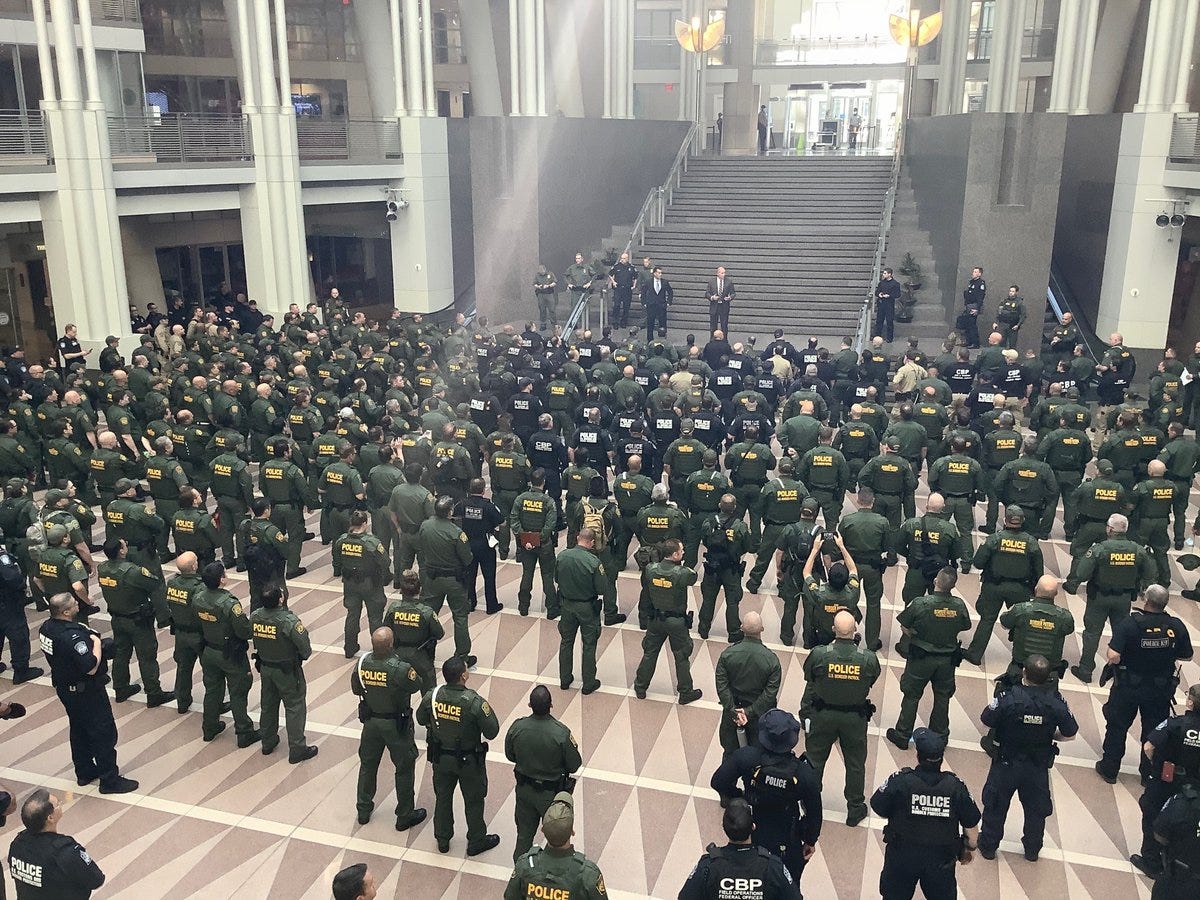
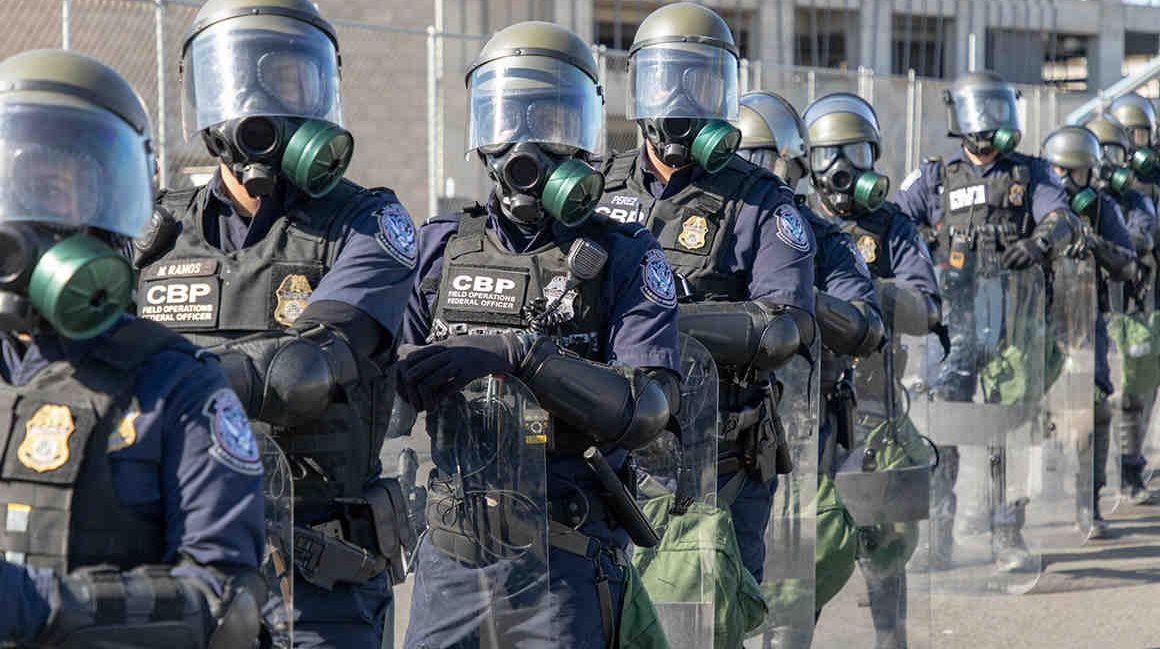
The first Secretary of DHS, Tom Ridge, was given a bottomless pit of federal funding to create this new army. A hiring surge ensued that shoveled new recruits through the academy — further shortened to 52 days — and into the field faster than the time it took to complete their background checks. As a result, the agency already infamous for its abbreviated and questionable training tradition added 17,000 agents — half the total force — by the end of the Bush administration. Many of these were unfit to carry a badge and gun, according to James F. Tomsheck, an eight-year CBP Assistant Commissioner of Internal Affairs turned whistleblower.
The lax hiring practices created a “perfect storm for corruption and misconduct to develop,” Tomsheck stated in 2014, adding that 5–10% percent of Border Patrol agents and officers are actively corrupt, stealing government property; leaking sensitive information; abusing detainees; and taking bribes from drug- and people-smugglers to look the other way. Other high-ranking CBP officials have pegged the corruption rate at closer to 20%. Between 2005 and 2012, at least one officer was arrested for misconduct every single day. The conservative CATO Institute found that from 2006 to 2016, CBP and Border Patrol disciplinary infractions outstripped all other federal law enforcement. Bush’s CBP Commissioner Ralph Basham admitted in 2014, “We found out later that we did, in fact, hire cartel members.”
But cartel members weren’t the half of it. Polygraph exams, implemented only after the surge, discovered that drug users and smugglers, kidnappers and sexual predators had also been added to the force. And then there were the avowed white supremacists, says Jenn, many of whom rode the hiring wave from the 20 regional “fiefdoms” into elevated leadership roles. Among them: Carla Provost of the “Douglas Mafia” who served as Border Patrol Chief from August 2018 through January 2020.
“After 9/11, anti-immigrant groups, seeking to reduce both legal and illegal immigration to the US, got into bed with CBP through the union,” says Jenn.
Called the National Border Patrol Council, it endorsed Trump for president in 2016 — the first time the agency had ever backed a presidential candidate. Its representatives are regulars at agency conventions and frequent speakers on the Breitbart-sponsored podcast: The Green Line | The Truth Straight From The Border. The CBP website is peppered with resources for agents and their families produced by such right-wing organizations as NumbersUSA, Center for Immigration Studies, and the The Federation for American Immigration Reform (FAIR), which was subsequently labeled a hate-group by the Southern Poverty Law Center due to its “ties to white supremacist groups and eugenicists.”
FAIR’s rhetoric sounds, word for word, like that of Stephen Miller, the architect of Trump & Co’s racist and draconian immigration policies, and vice-versa.
Can He Do That?


Since the June 4, 2020, anniversary of China’s Tiananmen Square massacre, unidentified masked and camouflaged agents in full tactical gear have made their presence felt on the streets of Washington, DC, Portland, OR, and Seattle, WA, unleashing tear gas, bloodying protesters, and pulling activists into unmarked vans. They have been identified as members of the Border Patrol Tactical Unit (BORTAC) — CBP’s a quasi-militarized SWAT team.
“They’re the most violent and racist in all law enforcement,” says Jenn.
It’s a “blatant abuse of power,” states Oregon Governor Kate Brown.
It’s an “attack on our democracy,” adds Portland Mayor Ted Wheeler.
It’s a dress rehearsal by a president and an administration with an “authoritarian impulse,” says Charles Pierce.
It’s “the kind of thing we see in authoritarian regimes,” says Mary B. McCord, Georgetown Law Professor and former a National Security Official at the US Department of Justice.
Yet, while even members of the US House of Representatives believe that no US president has “unfettered authority to direct thousands of federal law enforcement personnel to arrest and detain American citizens exercising their First Amendment rights,” a former senior intelligence officer states that DHS agents are not required to wear identifiers when conducting arrests.
Jenn concurs. “And that’s exactly what makes them so troubling.”
Former Border-Patrol-agent-turned-whistleblower and now full-time immigration activist, Jenn Budd reminds us that CBP agents willingly pulled asylum-seeking families apart. They willingly hold migrants of all ages in crowded cells for weeks, with 100 people to one toilet. They looked away as children died of dehydration and flu in their custody. And that — then as now — they fail to see the level at which their violence, impunity, and ability to dehumanize others have been normalized.
CBP and Border Patrol agents “work in a limited Constitutional rights arena,” Jenn states. “They are not accustomed to enforcing laws on Americans with Constitutional rights. They are our nation’s most violent federal law enforcement agents.” And they operate within 100 miles of any US land border or seacoast. That means nine of the 10 largest US cities and some 200 million people fall under its jurisdiction: almost two-thirds of the US population.
No, Trump & Co cannot harness the Green Monster for their use as personal police. But they have. And that’s exactly what makes this story so troubling.
In addition to Jenn’s bravery and advocacy, I’m grateful to Kelly Lytle Hernandez, Luis Alberto Urrea, Francisco Cantú, and Todd Miller, whose work greatly aided this piece.
Sarah Towle is an award-winning London-based US expatriate author sharing her journey from outrage to activism one story of humanity and heroism at a time. Check out her stories on the Angry Tías and Abuelas, Redneck Revolutionary Brendon Tucker and human rights heroes Jennifer Harbury and Jodi Goodwin. This is Episode 17 in her travelogue of a road trip gone awry: THE FIRST SOLUTION: Tales of Humanity and Heroism from Trump’s Manufactured Border Crisis, rolling out on Medium as fast as she can write it — because, in Sarah’s words, “it’s Just. That. Urgent.”
“Let us be reminded that before there is a final solution, there must be a first solution, a second one, even a third. The move toward a final solution is not a jump. It takes one step, then another, then another.” — Toni Morrison, 1995
human rights immigration Jennifer Budd Texas Rangers US Border Patrol